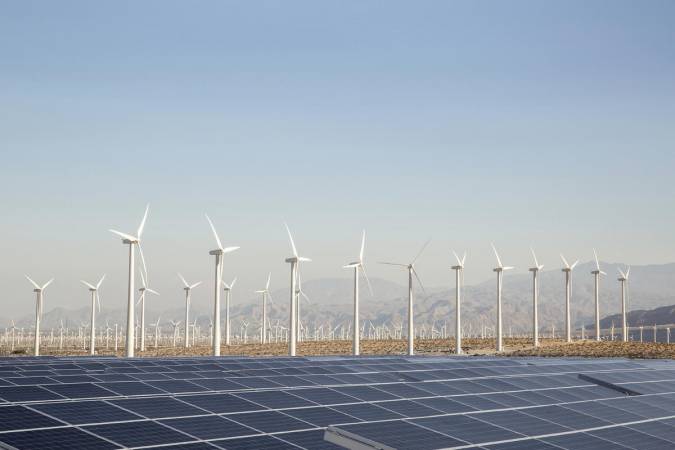Why renewable energy is attractive to financiers

One of the topical areas that dominated discussions in Glasgow, Scotland, during the COP26 was the pace of progress on financing initiatives required to turn the tide of climate change.
In the face of the growing need for countries to mobilise resources to manage the increasing impact of climate change on citizens’ lives, the financial aspect is now more important than ever.
So far, developed countries have pledged to raise at least $100 billion (Sh11.2tr) every year in climate finance to support developing countries. The Organization for Economic Co-operation and Development estimates that $78.9 billion of climate finance was mobilized in 2018.
The International Renewable Energy Agency (IRENA) Global Landscape of Renewable Energy Finance 2020 Report indicates that the global investment in renewable energy made significant progress between 2013 and 2018, with a cumulative $1.8 trillion invested.
Indeed, the shift to investments in green energy is taking root and a question is why this is becoming attractive especially to financiers and development partners.
First, renewable energy has proven, in terms of market demands, that it can be economic-friendly compared to non-renewables.
Take, for instance, the fossil fuel industry during the Covid-19 pandemic. The industry recorded its sharpest drop in a quarter of a century.
But investment in renewable energy capacity still grew by 2 per cent to $303.5 billion in 2020, while renewable capacity installs surged 45 per cent, compared with 2019, to 265 Gigawatts, signalling the fastest growth rate since 1999.
This clearly shows that even in unstable markets, renewables will perform better and provide value for investors money compared to non-renewables.
Secondly, there is no doubt that renewables are creating more opportunities in terms of employment compared to non-renewables.
According to the eighth edition of Renewable Energy and Jobs: Annual Review 2021 by IRENA, renewable energy employment worldwide reached 12 million in 2020, up from 11.5 million in 2019.
The report indicates that solar and wind jobs continued leading global employment growth in the renewable energies sector, accounting for four million and 1.25 million jobs respectively.
The third aspect is based on the developing technology which has enabled energy companies to increase capacity at a lesser cost especially on solar and wind.
With the Ministry of Energy estimating wind potential to be at 15,000MW while solar is abundant considering Kenya’s position along the equator, the private sector appears to have taken the cue to invest in renewable energy. The renewability aspect of these green sources acts as a strong foundation for investments.
Fourth, the health benefits of green energy are giving investors, especially in the private sector, value for their organisation’s existence.
According to IRENA, the private sector remains the primary capital provider for renewables, accounting for 86 per cent of investments in the industry between 2013 and 2018. Project developers provided 46 per cent of private finance, followed by financial institutions at 22 per cent.
Last but not least, renewables are becoming attractive given the green climate fund which holds about $10 billion in commitment.
Green bonds are a fixed income instrument whose proceeds are used to finance or refinance projects which generate environmental benefits.
According to the Green Bonds Kenya Annual Report for 2018, the global green bond market has grown significantly, with issuances totalling $155.5 billion in 2017 and an estimated $250 to $300 billion in 2018.
Kenya has already made great strides, having earned the distinction in 2020 of being the first country in East and Central Africa to successfully issue a green bond that raised Sh4.3 billion towards the construction of an eco-friendly student housing project.
Every company needs to seize the opportunity that the climate change crisis is offering.
Beyond the COP26, we must unleash the trillions in private finance needed to catapult us towards net-zero emission by 2050.











